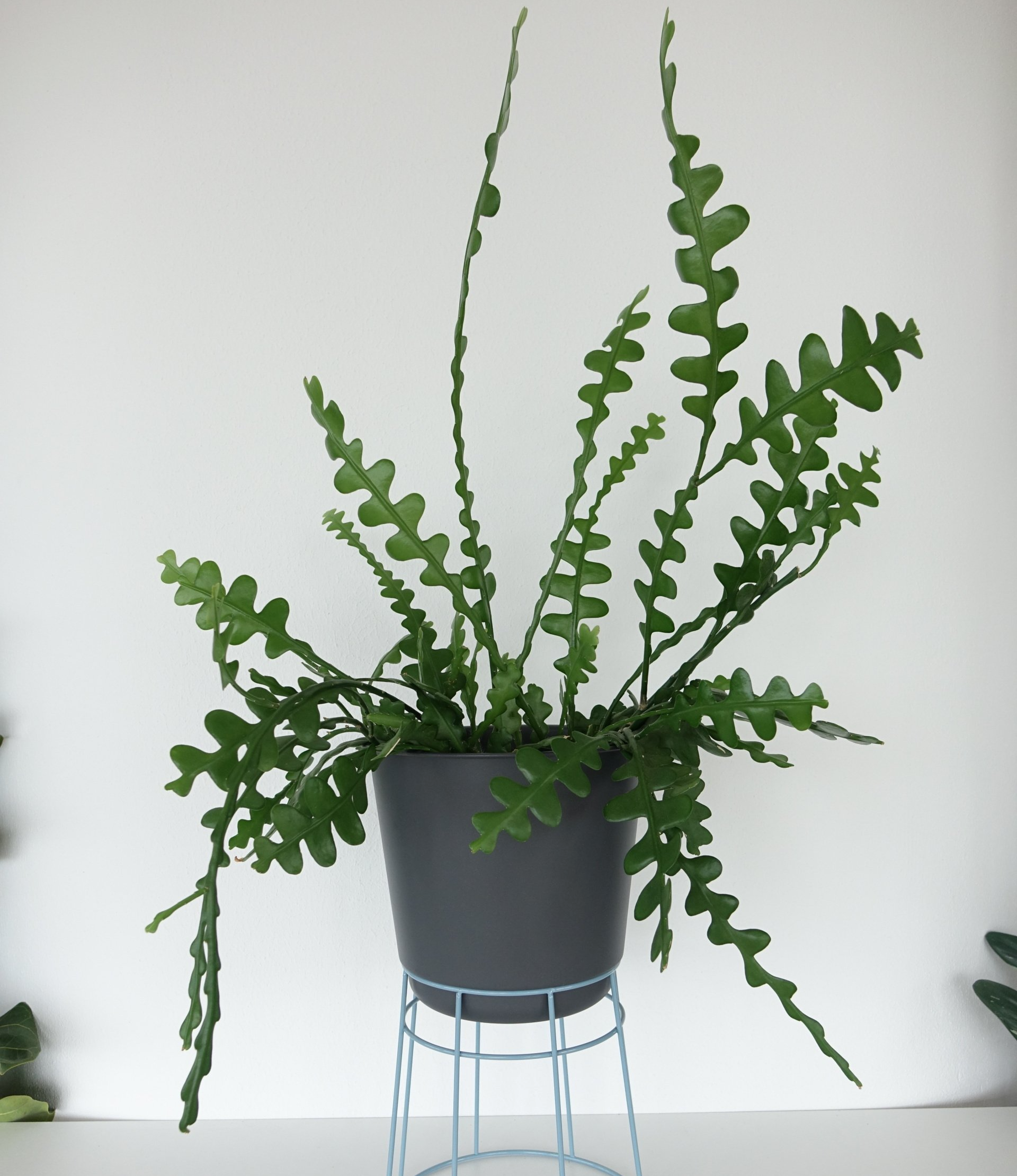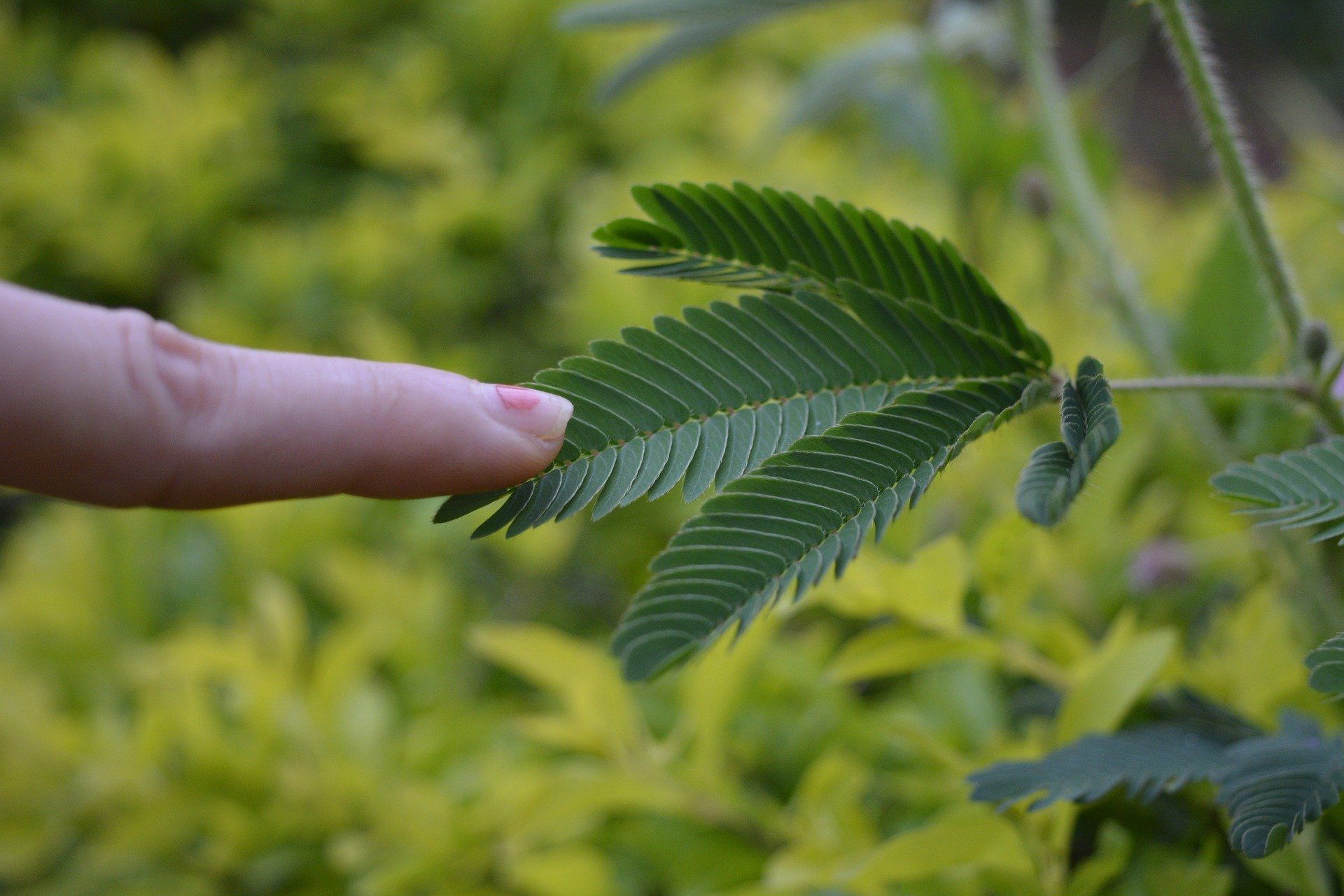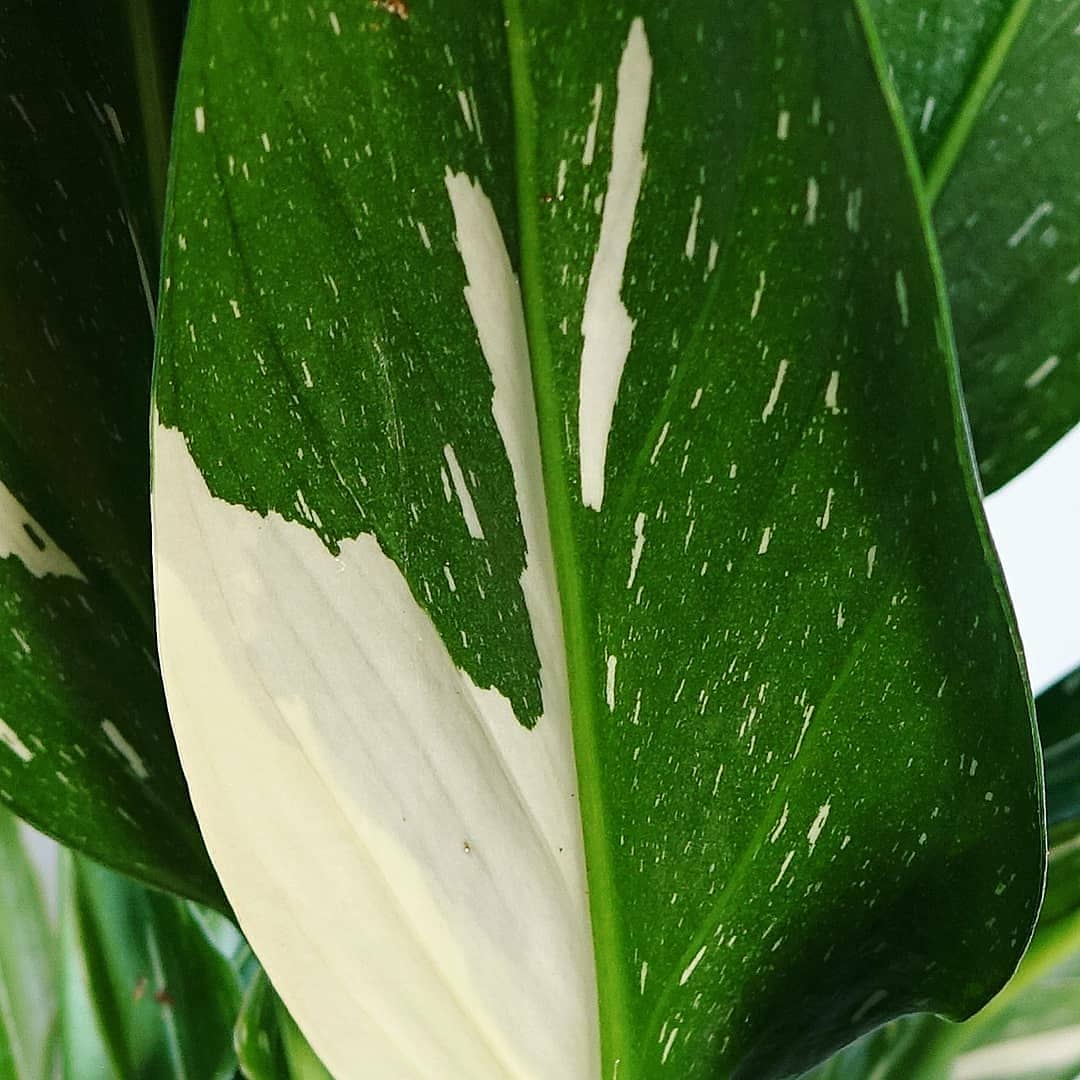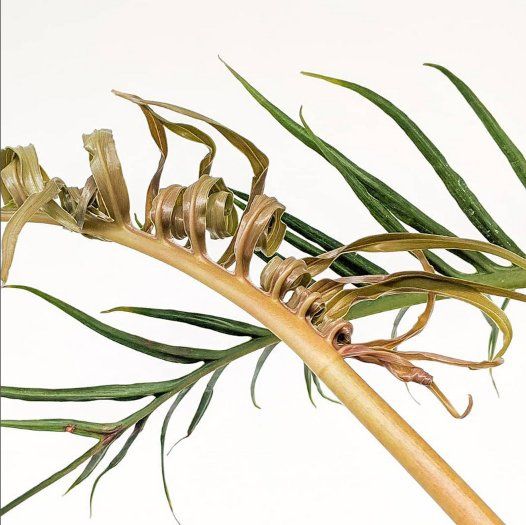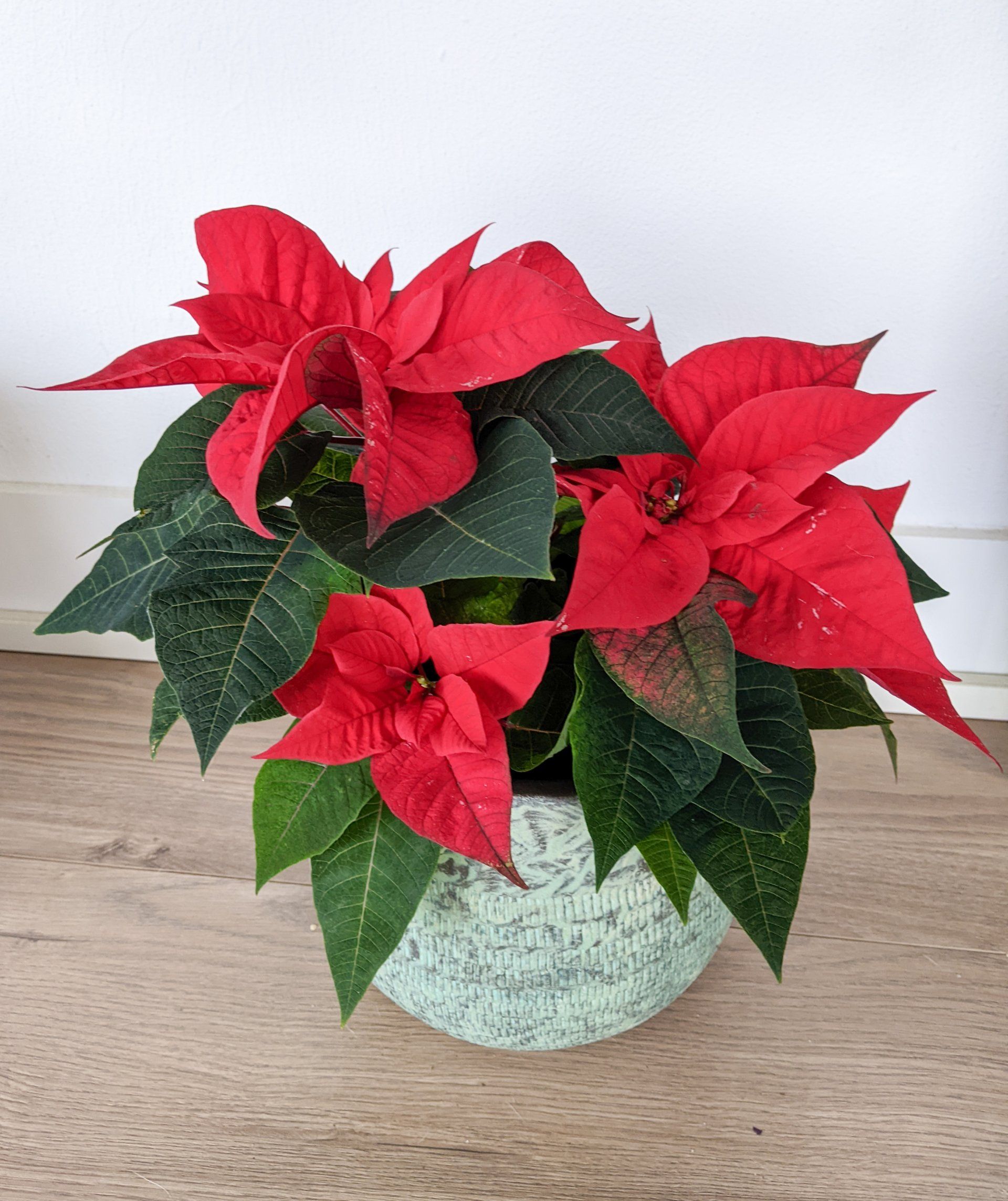555-555-5555
mijnmail@mailservice.com
Caudex plants
Woody bulbs
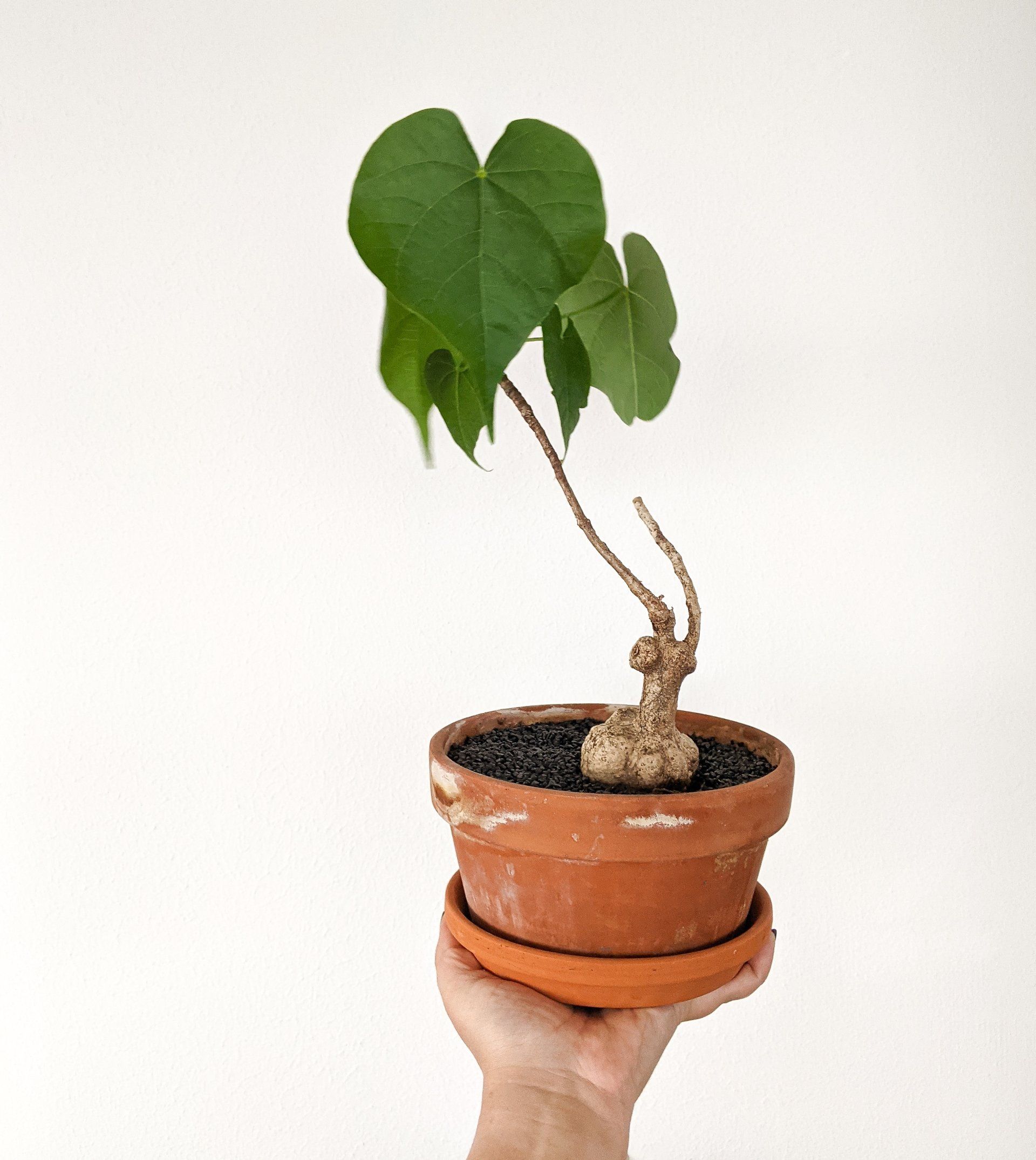
Firmiana colorata
Caudex plants are extremely popular these days. But the concept of caudex plant is not so clear. What exactly is it and how do you take care of them? The December issue of Gardeners' World magazine featured an article by Rogier van Vugt (greenhouse manager Hortus Botanicus Leiden) and myself about caudex plants. Download it (in Dutch!) or read the translation below. You can also find more photos and tips for sowing caudex plants here.
R: The term caudex refers to the stem of a plant which is thickened with these plants. This gives the plant a bizarre appearance, an appearance that we sometimes pay large sums of money for. But because the plants are popular, there are also countless other plants that are not technically caudex plants that are nevertheless traded under this name. Sometimes plants make a thick woody underground tuber which you can plant halfway into the ground to get a similar effect. There are even bulbous plants that make a thick above-ground bulb that somewhat resembles a caudex but consists of several layers in cross section, just like an onion. From a botanical point of view, they are all different, but for the enthusiast all equally beautiful and therefore often sold like caudex plants.
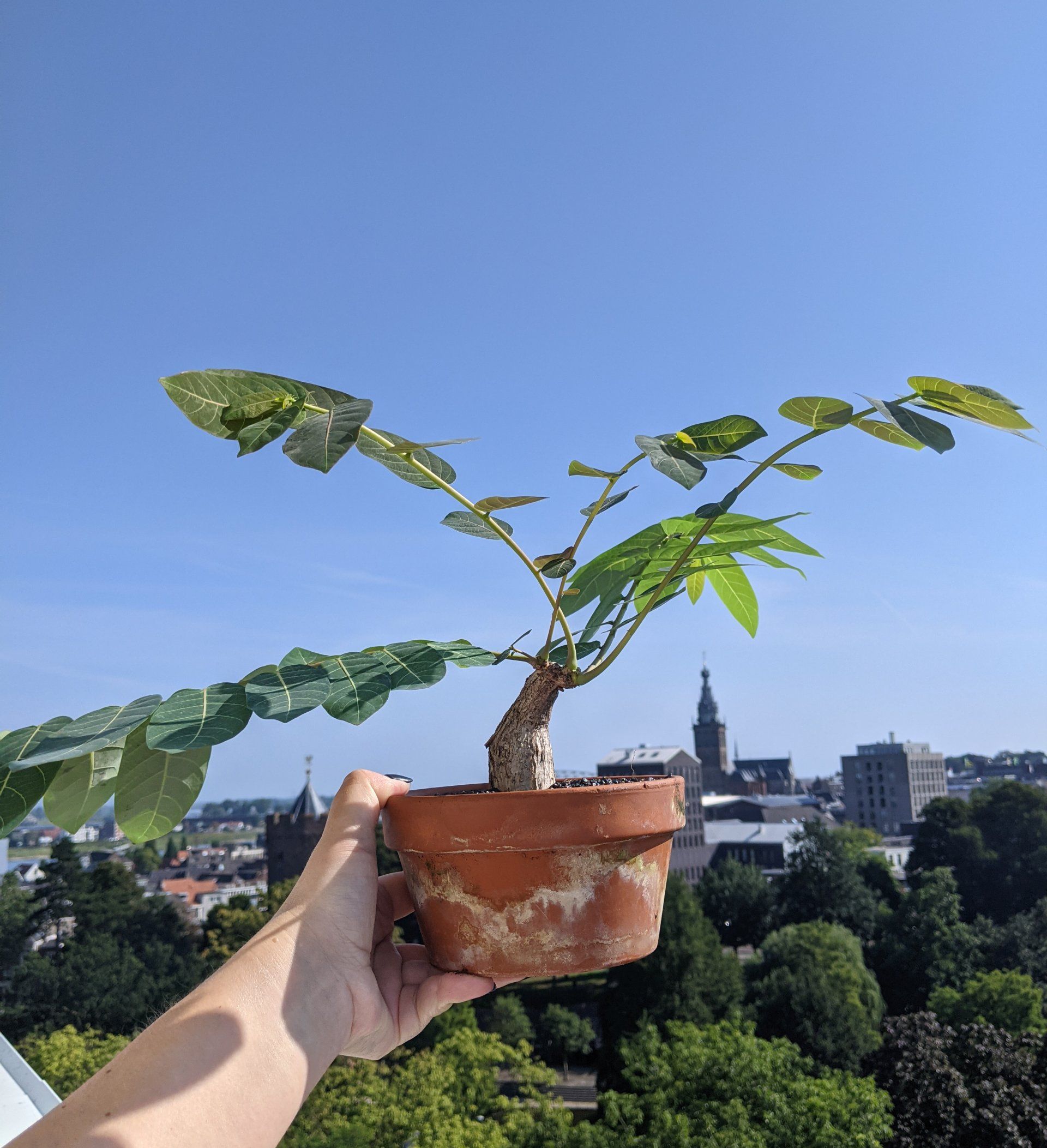
Titel dia
Phyllanthus mirabilis
Knop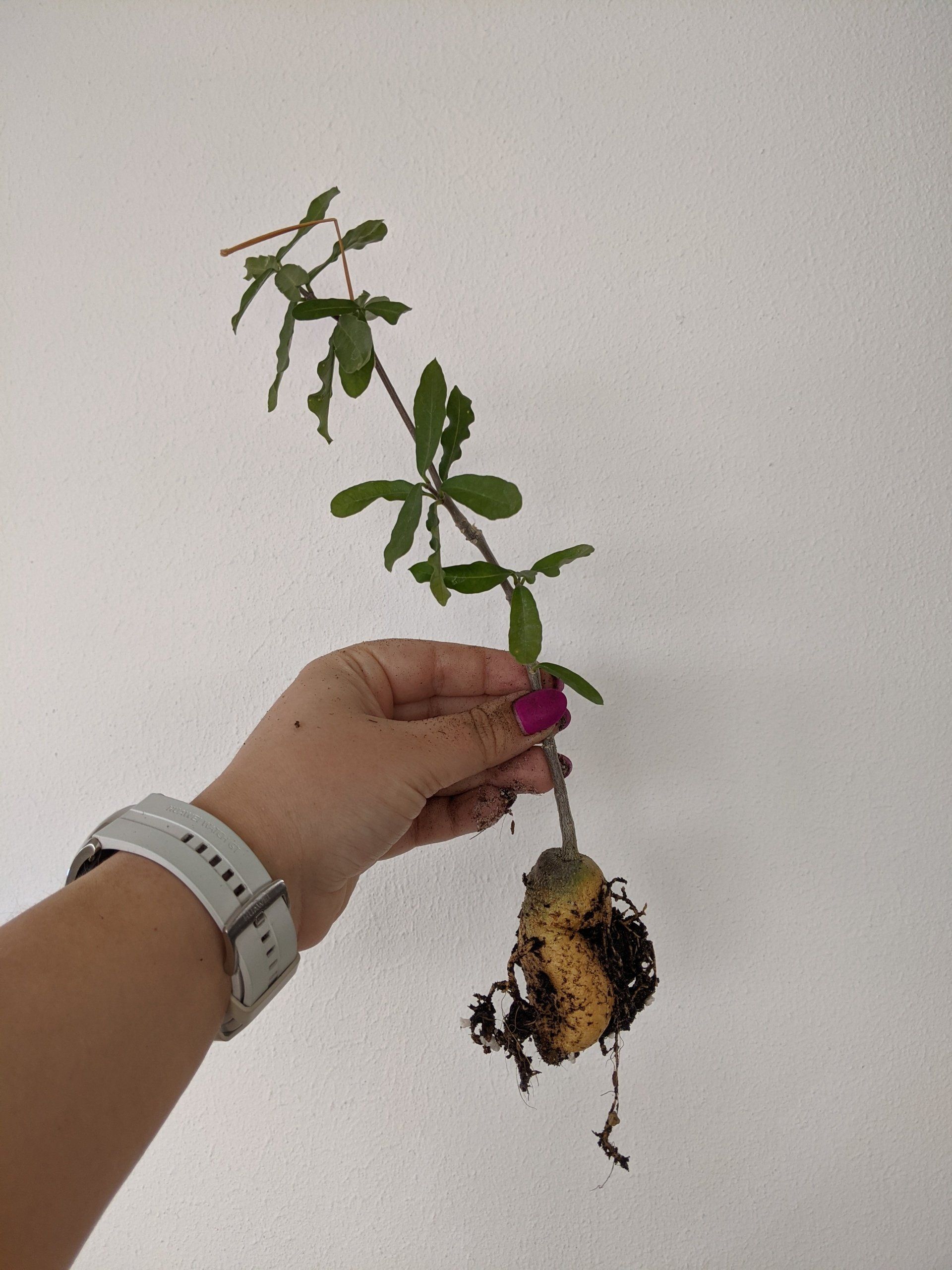
Titel dia
Fockea edulis
Knop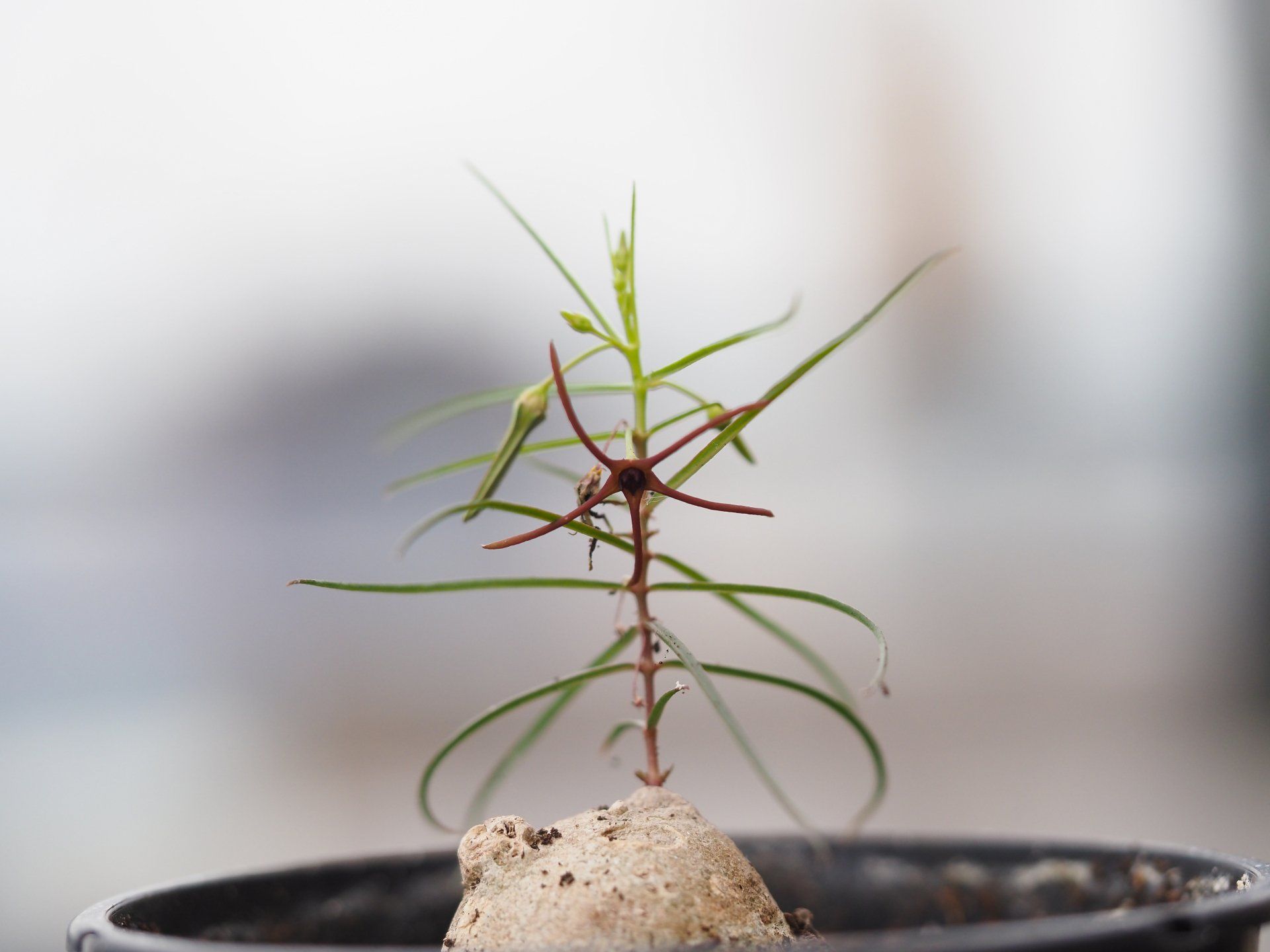
Titel dia
Brachystelma shrirangii
Knop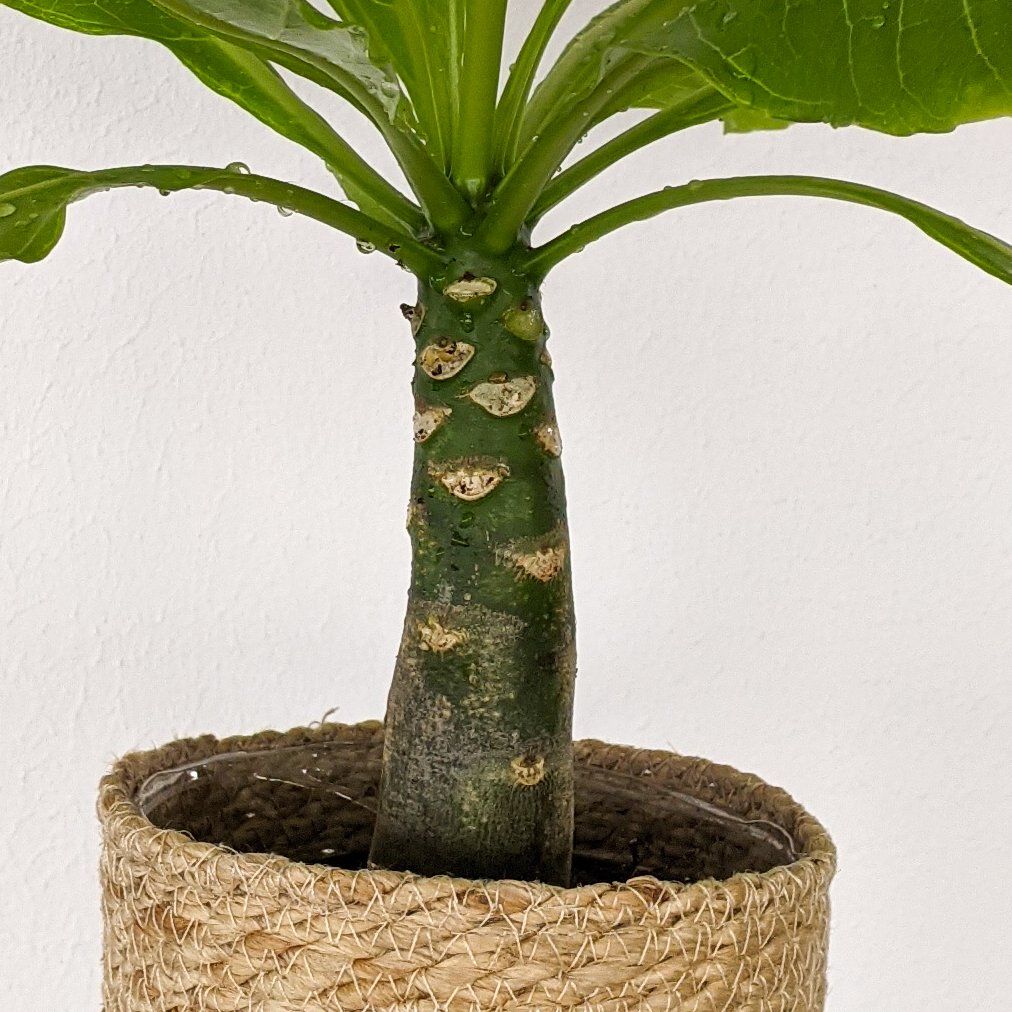
Titel dia
Hawaiiaanse palm - Brighamia insignis
Knop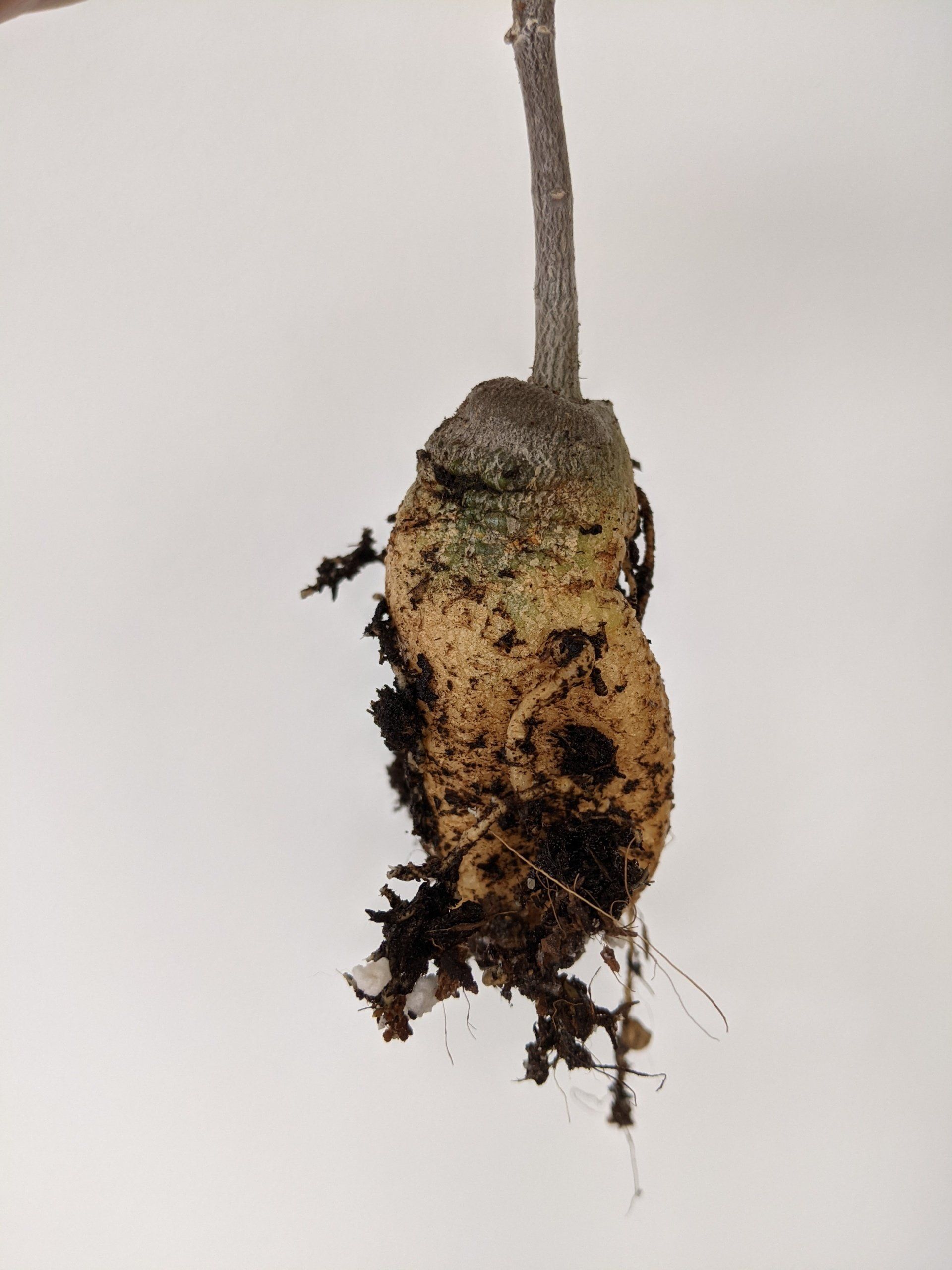
Titel dia
Fockea edulis
Knop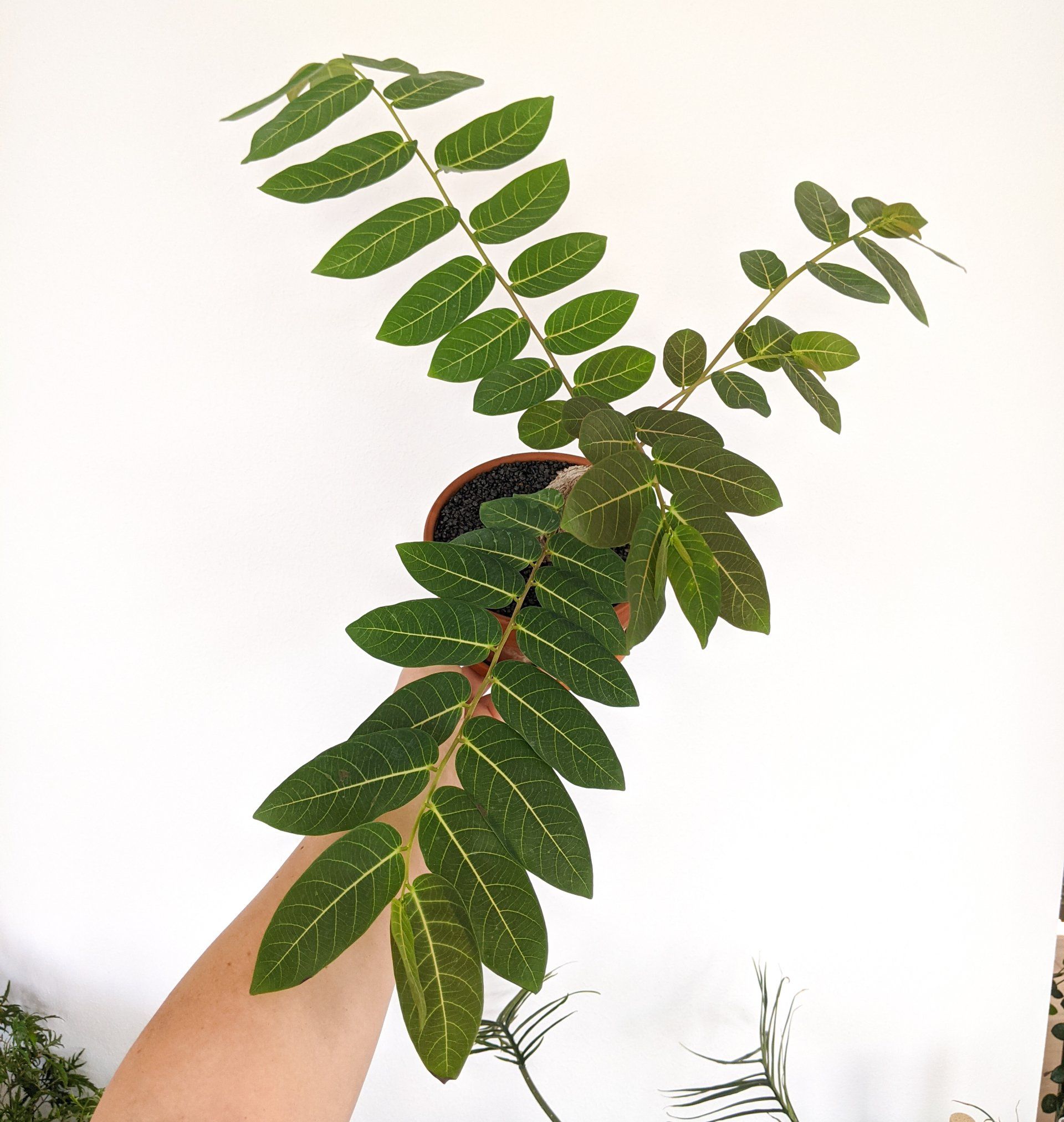
Titel dia
Phyllanthus mirabilis
Knop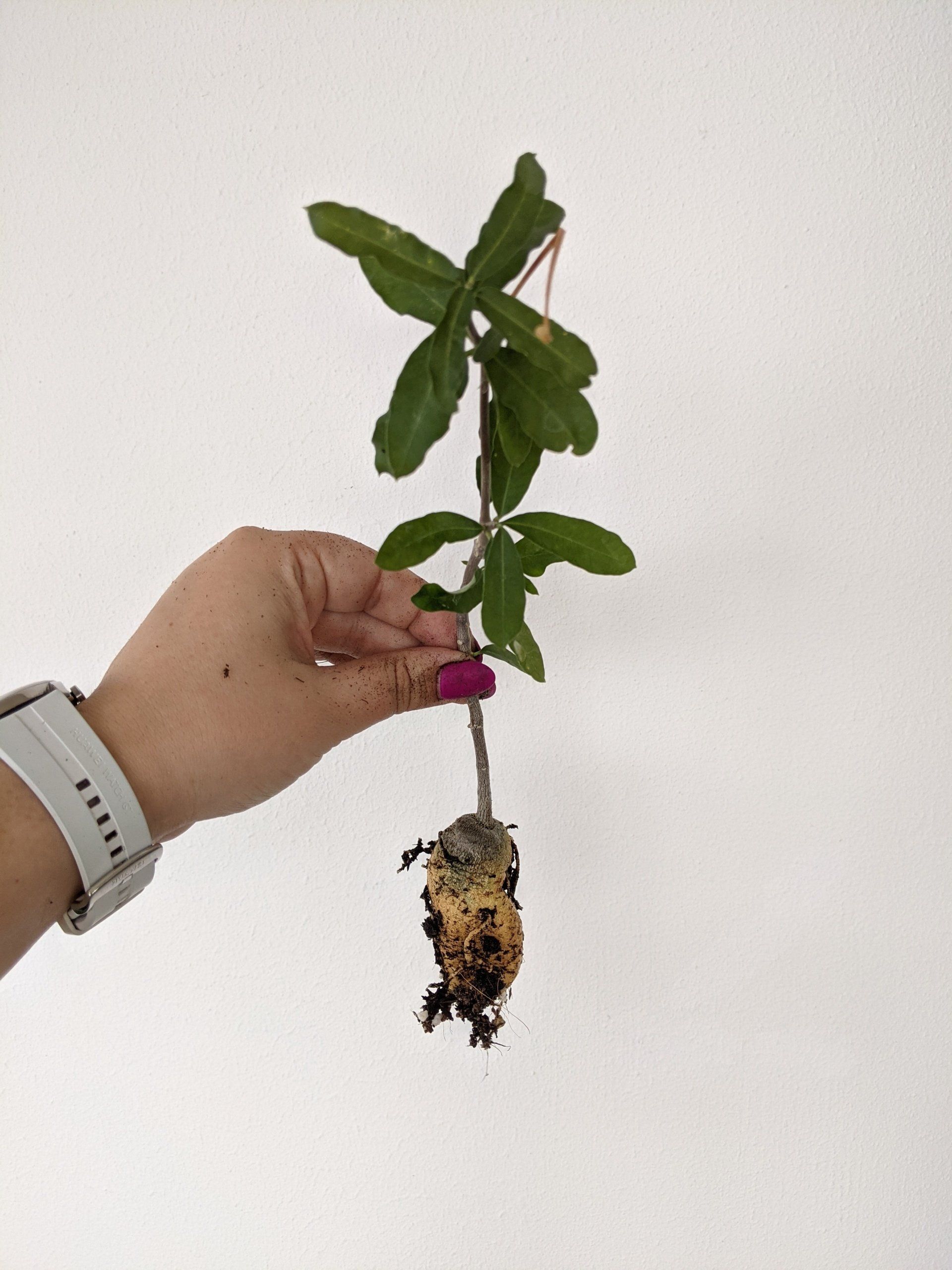
Titel dia
Fockea edulis
Knop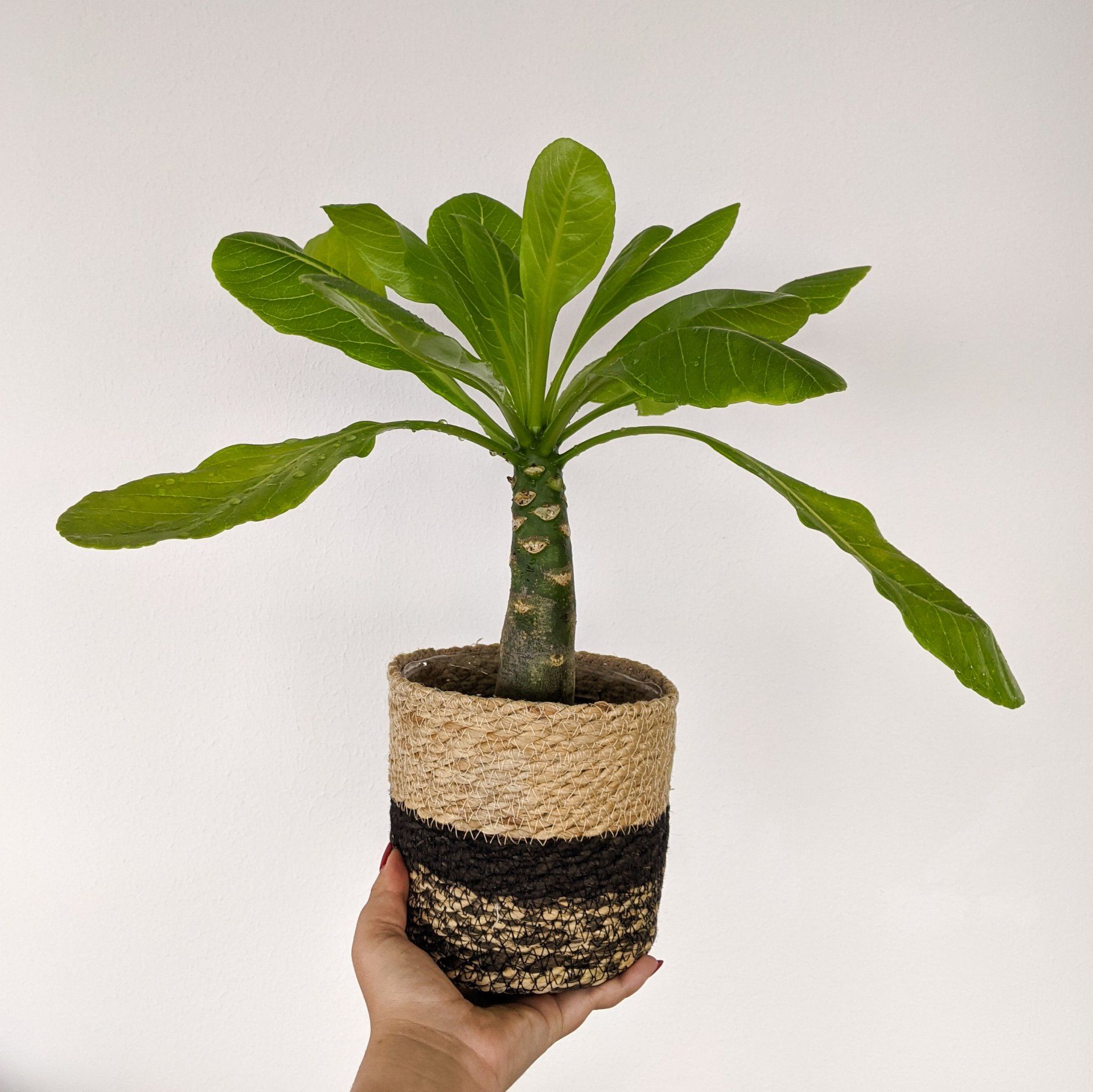
Titel dia
Hawaiiaanse palm - Brighamia insignis
Knop
Some caudex plants
This caudex, tuber or bulb of course has a function. It is a storage of water and nutrients that allows the plant to survive a difficult time and then start growing quickly when the weather picking up. Caudex plants therefore often grow together with succulents, only they handle storage differently. Succulents have thick leaves and caudex plants have a large central storage tank. The foliage is often very soft and made to be present only in favorable times. So don't be surprised if your caudex plant is completely bare for months.
Stephania erecta - Potato plant
M: The best-known example of a caudex plant at the moment is probably Stephania erecta, also called the 'potato plant' because the tuber kinda resembles a potato. The tuber is deliberately potted up partly above ground and that provides a nice contrast: that brown, potato-like bulb and the delicate thin stem with the round leaves that grows from it.
It is different with Adenium varieties such as the well-known desert rose. This is one of the few plants where the caudex grows naturally above the ground. That's because this plant grows on rocks. There is simply no place underground for such a large storage!

Titel dia
Schrijf uw onderschrift hierKnop
Titel dia
Schrijf uw onderschrift hierKnop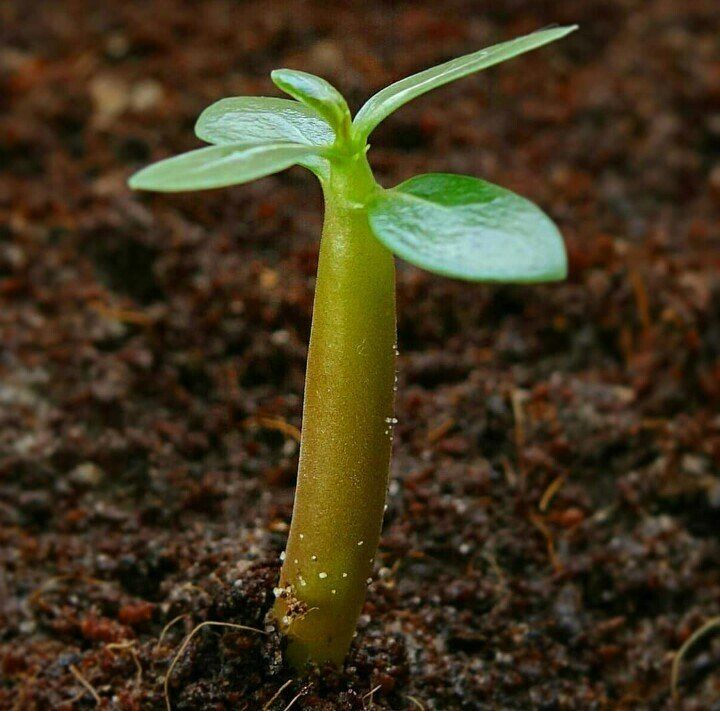
Titel dia
Schrijf uw onderschrift hierKnop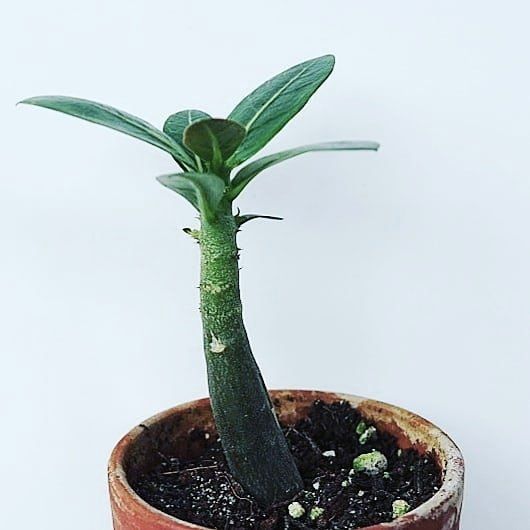
Titel dia
Schrijf uw onderschrift hierKnop
Titel dia
Schrijf uw onderschrift hierKnop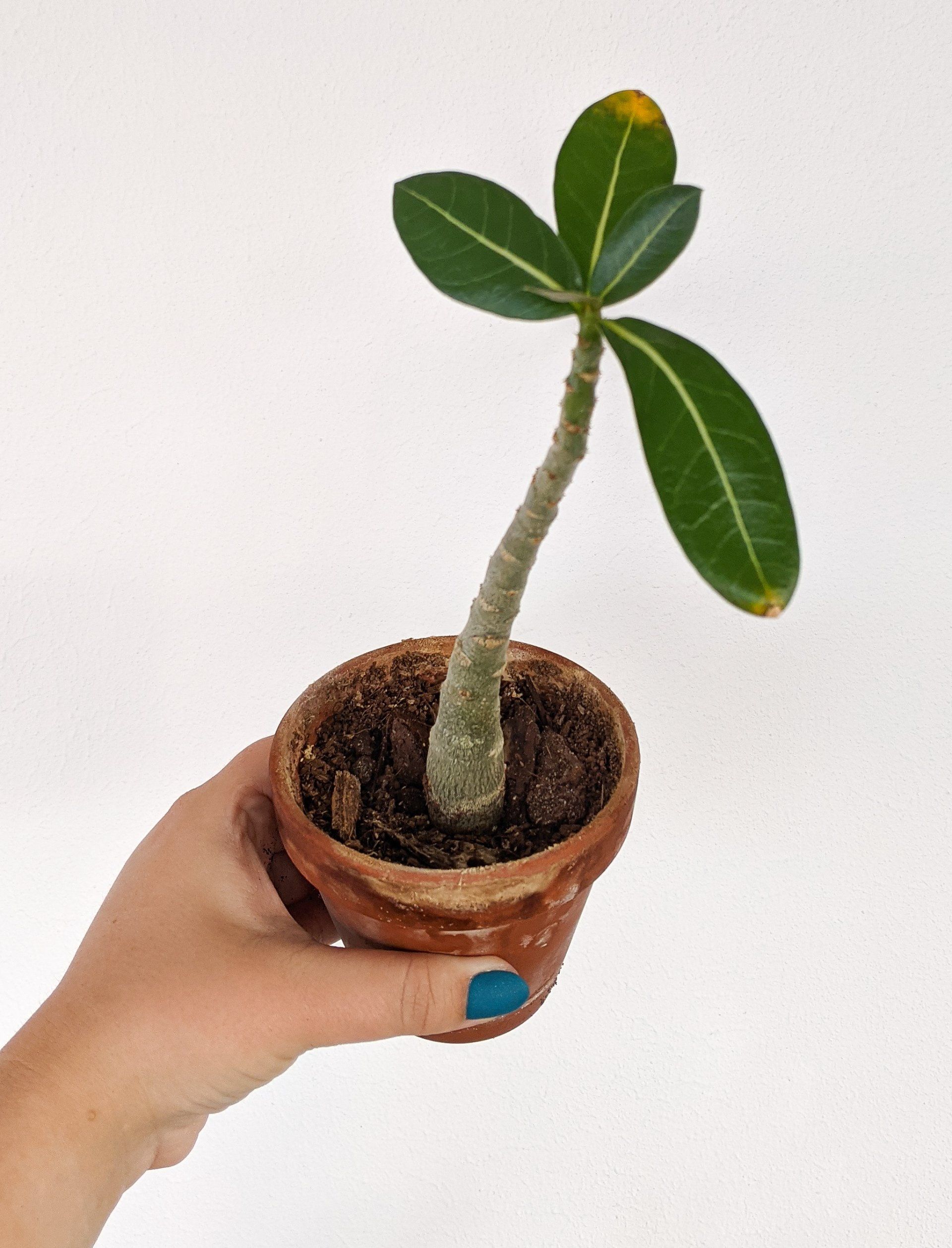
Titel dia
Schrijf uw onderschrift hierKnop
Desert rose - Adenium obesum. Desert rose is fairly easy to sow and quickly you'll see it's a caudex seedling: the stem thickens!
R: Besides the well-known Stepahnia erecta, there are a few other Stephania that have come onto the market. The most notable is the Stephania kaweesakii which is also known as Stephania Nova. It turned out that this species should not be in the trade because the tubers of this newly discovered species were all looted from the wild.
The same goes for the beautiful Impatiens phenklaii. This sister of the Busy Lizzie produces a thick tuber from which annual shoots with purple-green leaves and orange-red flowers emerge.
Dioscorea or Yam also has a few species that make a caudex. These are now widely sown and are a safe choice for people who want a Caudex plant that has a clean past.
If we look at the bulbous plants that are sometimes offered as Caudex plants, two clearly stand out. The African Boophane and Bowiea. The first makes a beautiful fan of blue-green leaves and the second makes ferociously climbing and branching flower sprays that make leaves unnecessary.
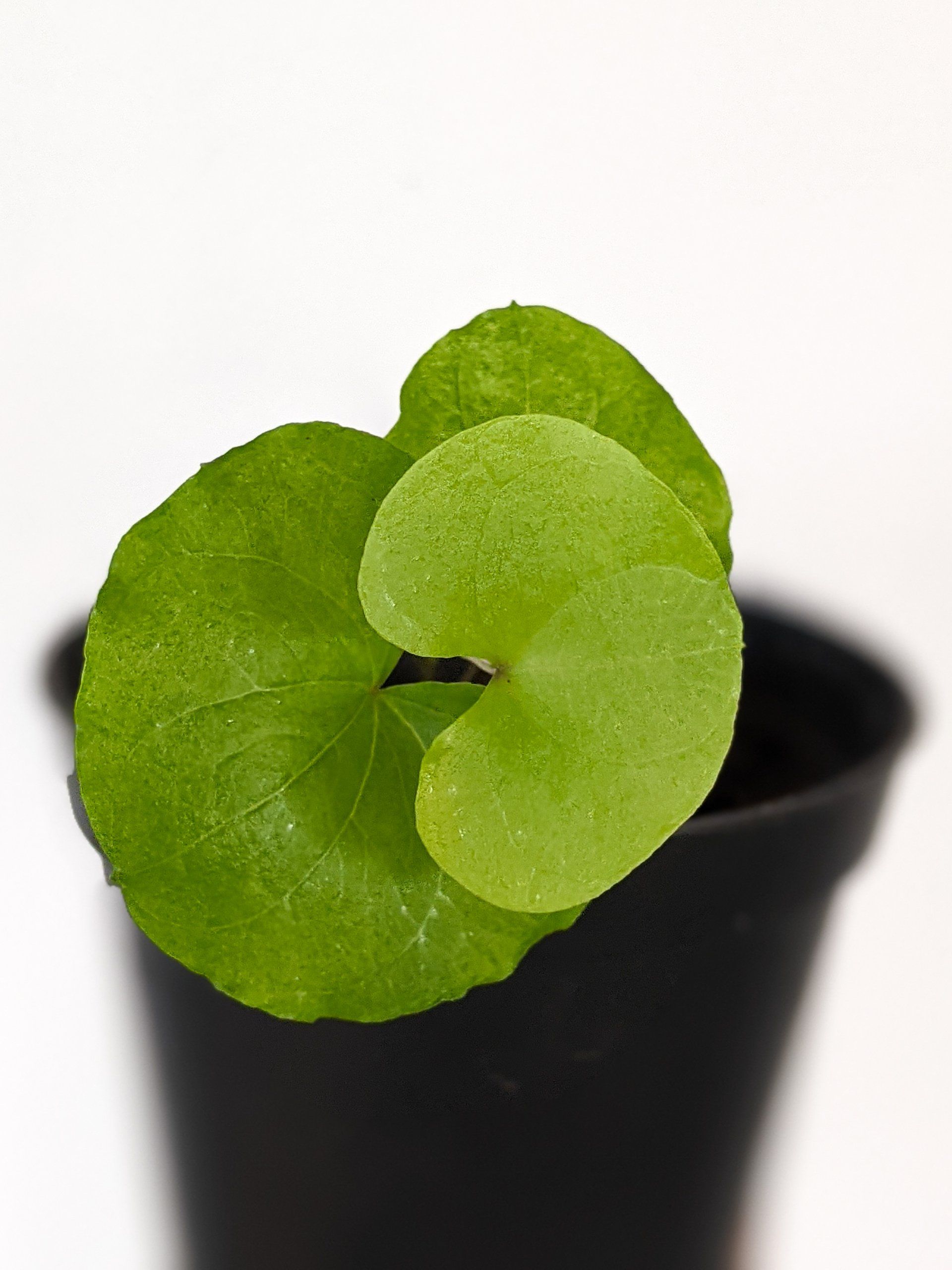
Titel dia
Schrijf uw onderschrift hierKnop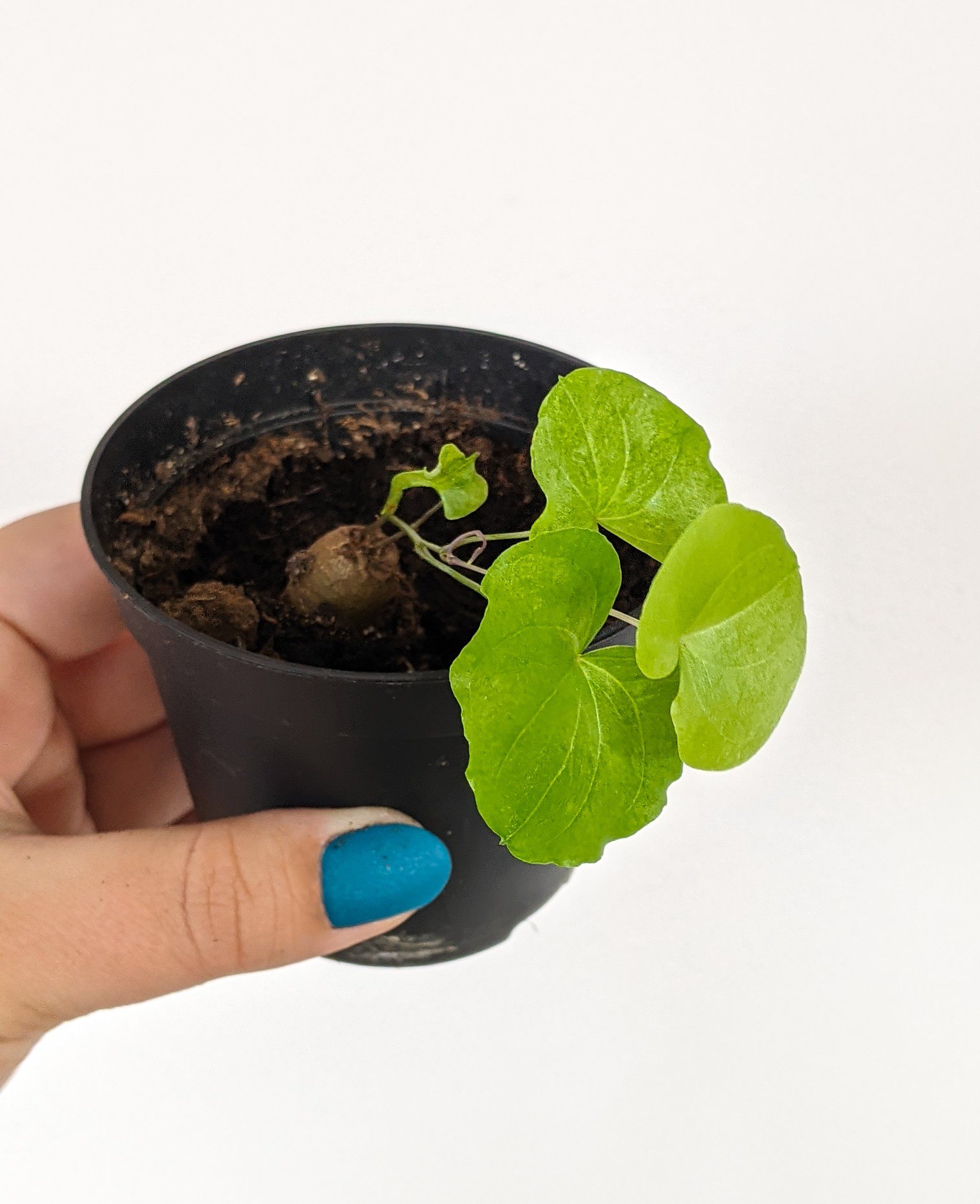
Titel dia
Schrijf uw onderschrift hierKnop
Titel dia
Schrijf uw onderschrift hierKnop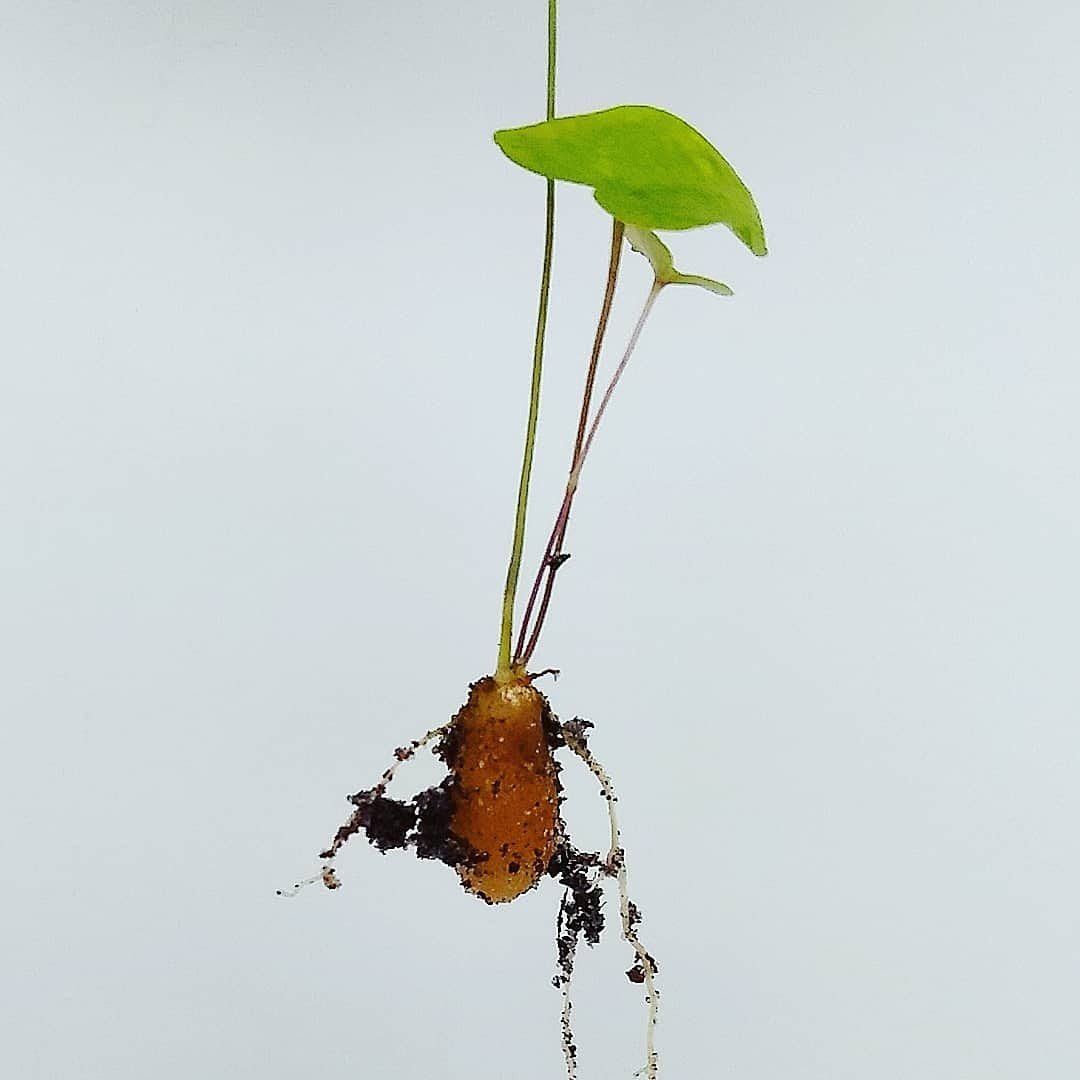
Titel dia
Schrijf uw onderschrift hierKnop
Dioscorea elephantipes seedling after a few months. You can already see the woody bulb!
M: The care of caudex plants is not difficult, but a few things are important to know. First of all, the dormant phase: don't be alarmed if your plant suddenly drops all its leaves! The plant goes to sleep, so the leaves are no longer needed. Reduce watering and when all the greenery has disappeared, you only need to water it a little bit once a month. In that period you are therefore looking at a bare tuber. Depending on the species, this can also be in the summer, as is often the case with Dioscorea hemicrypta and elephantipes. However, keep the tubers at the right temperature: some varieties such as Stephania die if they are kept too cold.
Bringing a caudex plant back to life can take a lot of patience. With Stephanias it helps to increase the temperature and humidity with, for example, a bell jar, even before you see the plant growing. He then receives a signal that it is time to wake up. Keep in mind that Stephanias require a lot of light and moisture in their growth phase, so early in Dutch spring this potato will not sprout so quickly.
Dioscorea hemicrypta grown from seed, ~3 years old.
R: These plants usually develop their caudex very slowly. This makes large plants expensive and unfortunately that is why old specimens are regularly looted from the wild. Large irregularly shaped tubers with few or no roots and a relatively low price are alarm signals that this is plant collected in the wild. It is best not to promote this trade because it is a terrible shame if a 70-year-old plant dies because you want to put it on your windowsill. Fortunately, there are other options.
M: Sowing! This may not sound appealing to you after what Rogier said about slow growth, but trust me, it's real fun. With many plants you can see the growth of the caudex very quickly and that makes the seedlings special. A Desert rose is recognizable by the thick trunk a few days after germination. After a year, for example, with Dioscorea you already have a caudex the size of a small new potato, to continue that analogy. Rogier gave me a seed of Stephania kaweesakii . Within a few weeks I already saw the first nice round leaves, and now, after a few months, the trunk is thicker and harder. A wonderful process to follow! With a grow light or a good spot at a South facing window, you can still germinate a caudex plant in the fall or winter.
Rogier created a video about Stephania:
Stephania erecta
It is even more fun if you pollinate your flowering caudex plants yourself and harvest the seed. However, keep in mind that some caudex plants are dioecious: you need a male and a female plant.
You may be thinking: why not cuttings? That's faster right? You can often take cuttings from a caudex plant, but unfortunately the cutting will rarely form a caudex. Therefore it's hardly ever done.
Stephania kaweesakii
Buying seeds
Good spots to buy seeds:
Mesa Garden (US)
Unusual Seeds (Serbia)
Also Sunnyplants has some seeds of caudex plants.
Questions or remarks? Let me know!
